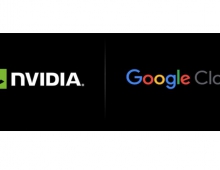
Google Introduces The Accelerated Mobile Pages Project To Advance Mobile Optimized Content
Google announced a new open source initiative called Accelerated Mobile Pages, which aims to improve the performance of the mobile web. Google wants webpages with rich content like video, animations and graphics to work alongside ads, and to load instantaneously. They also want the same code to work across multiple platforms and devices so that content can appear everywhere in an instant- no matter what type of phone, tablet or mobile device you’re using.
 The project relies on AMP HTML, a new open framework built entirely out of existing web technologies, which allows websites to build light-weight webpages.
The project relies on AMP HTML, a new open framework built entirely out of existing web technologies, which allows websites to build light-weight webpages.
Accelerated Mobile Pages are just like any other HTML page, but with a limited set of allowed technical functionality that is defined and governed by the open source AMP spec. Just like all web pages, Accelerated Mobile Pages will load in any modern browser or app webview. AMP files take advantage of various technical and architectural approaches that prioritize speed. The goal is not to homogenize how content looks and feels, but instead to build a more common technical core between pages that speeds up load times.
In addition, AMP files can be cached in the cloud in order to reduce the time content takes to get a user’s mobile device. Under this type of framework, publishers continue to control their content, but platforms can easily cache or mirror the content for optimal delivery speed users. Google has stated that it will provide a cache that can be used by anyone at no cost, though the cache (Google's or otherwise) is not required.
Over time Google anticipates that other Google products such as Google News will also integrate AMP HTML pages.
Twitter, Pinterest, WordPress.com, Chartbeat, Parse.ly, Adobe Analytics and LinkedIn are among the first group of technology partners planning to integrate AMP HTML pages.
Today the Accelerated Mobile Pages Project announced the release of the initial technical specification which will appear on GitHub, a broadly used repository for open-source content. More features and functionality will be added over the coming weeks, including functional support for subscription models as well as vendor support for advertising functionality.
Facebook in May started testing "Instant Articles," which load news stories faster from a handful of publishers, like the New York Times, inside the social network's mobile app. Apple's News app came automatically built into the latest version of its mobile operating system and has stories from dozens of media brands. The Discover feature of disappearing-messages app Snapchat launched in January and currently has stories and video from 14 different media brands, including CNN, Mashable, BuzzFeed, People and Vice.




















